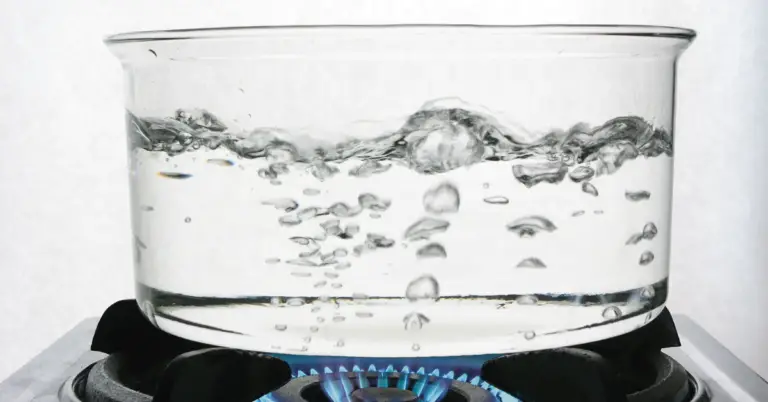Almost everyone has heard of the word – boil or boiling. It is a very common term that we use regularly. For example: boiling of water or milk, etc.
In India, mothers used to tell their kids to boil water or milk. It’s a custom that is followed in every Indian household.
The term pasteurization may to new to many. This term is known well by dairy or food technologists.
No need to worry about it.
In this article, we will try to understand the basics of boiling and pasteurization of milk in simple words. After reading the article, I assure you that you will be able to describe the boiling and pasteurization of milk easily.
This article is helpful for both a layman and a technologist person.
Table of Contents
What is Boiling?
In simple words, boiling is the process by which a liquid turns into vapour when heated to its boiling point.
A liquid can be water, milk, oil, etc. Vapour can be easily understood as steam ( bhaap, in Hindi).
The boiling point is defined as the temperature at which the liquid vapour pressure becomes equal to the atmospheric temperature.
1. What is boiling of water?
The same process is applied to both boiling water and milk. The boiling point of water is 100° C at a pressure of 1 atm.
The boiling point of a liquid depends on factors such as:
- Temperature
- Atmospheric pressure
- Vapour pressure
1.1 Why boiling of water is necessary?
Boiling of water is necessary to kill the bacteria present in water. A heat treatment that can be performed easily. It is one of the cheapest methods to eradicate microbes from water.
2. What is boiling of milk?
The above definition of boiling applies to boiling milk also. The boiling point of milk is 100.15° C.
The boiling point of water and milk is almost the same, there is merely a temperature difference.
1.2 Why boiling of milk is necessary?
In households, milk is boiled before consumption. Boiling reduces the chances of health risks. It kills the microorganisms present in milk and makes it safer for consumption.
What is the Pasteurization of Milk?
1. History
Before knowing what pasteurization is, here is a story related to it.
In 1860s, a French scientist, Louis Pasteur was investigating the reason behind the spoilage in wine and beer. He discovered that microorganisms were the causes of spoilage and fermentation. Later, he developed a heat treatment method to prevent these, without altering its natural composition.
These were heated to a particular time-temperature combination which also increased its shelf life. The term "Pasteurization" was named after him.
2. Definition
Pasteurization, when used in association with milk, shall be taken to refer to the typical process of heating every particle of milk to at least 63 °C and holding at such temperature continuously for at least 30 minutes, or heating it to at least 72 °C and holding at such temperature continuously for at least 15 seconds, or any other temperature-time combination, sufficient to give a microbicidal effect equivalent to the above defined temperature-time combination and serve to give a negative phosphatase test that applies to milk immediately after pasteurization only, and cooling it immediately to a temperature of 4 °C or less.
It is the standard definition of pasteurization.
Purpose
- Eliminate harmful bacteria
- Makes milk safe for consumption
- Longer shelf life
- Promote public health
3. Types of Pasteurization
There are two types of pasteurization, which are:
- Batch Method
- Continuous Method
3.1 Batch Method
Batch method, also known as LTLT ( Low Temperature Long Time).
It involves heating the milk to a temperature of 63° C for 30 minutes and cooling it to 4° C.
3.2 Continuous Method
Continuous method, also known as HTST (High Temperature Short Time).
It involves heating the milk to a temperature of 72° C for 15 seconds and cooling it to 4° C.
Difference between boiling & pasteurization
Till now, you may have known the basics of boiling and pasteurization.
Here we will differentiate boiling and pasteurization, based on the following parameters:
- Temperature
- Holding Time
- Nutrient Value
- Microbial destruction
| Parameters | Boiling | Pasteurization (Milk) |
|---|---|---|
| 1. Temperature | 100° C (212° F) | 63° C or 72° C |
| 2. Holding time | Continuous | 30 minutes or 15 seconds |
| 3. Microbial destruction | Destroys most microorganisms | Destroys harmful bacteria (like Mycobacterium tuberculosis & Coxiella burnetti |
| 4. Nutrient Value | Affects taste, texture, and nutritional value | Minimal impact on taste, texture, and nutritional value |
| 5. Suitability | A wide range of foods | Liquid foods |
Conclusion
While both boiling and pasteurization are effective methods of killing harmful microorganisms, they differ in their temperature, duration, impact on nutrients, and effects on taste and quality. Understanding these differences can help you make informed decisions about food safety and quality, whether you’re cooking at home or involved in food and beverage production.
Remember, the goal of both boiling and pasteurization is to ensure that the food we consume is safe and free from harmful microorganisms. So, the next time you boil your vegetables or drink pasteurized milk, know that these processes are crucial in keeping your food safe and healthy.
